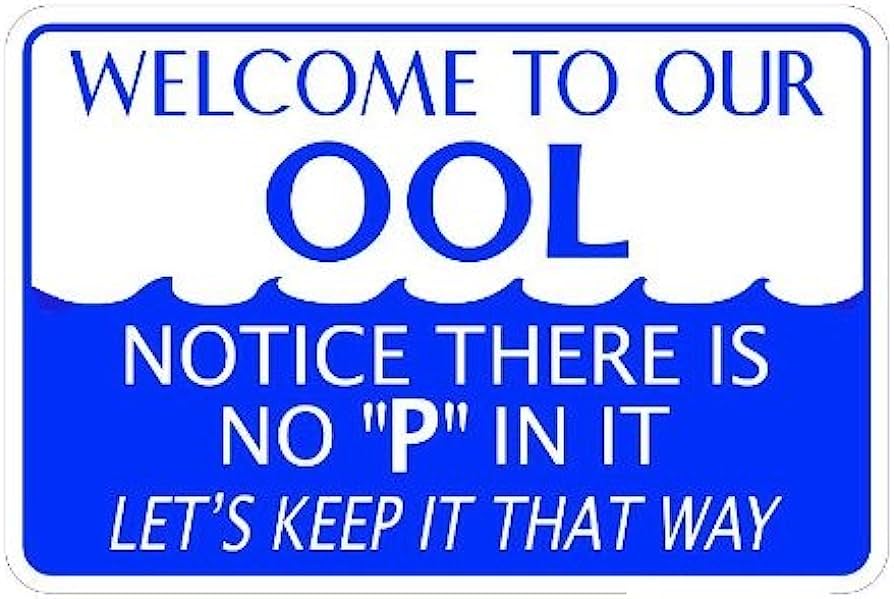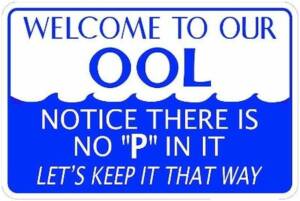
Putting the P in Performance: 8 Drivers of Organizational Success — June 2023
June 26, 2023
A couple of weeks ago, I had the pleasure of participating in a local association’s Leadership Academy, a forum to explore best practices with 60 or more local leaders. It was a great conversation, full of insights and useful ideas. In the middle of the session, I found myself responding to a question with a bunch of answers that all began with the letter P. I can’t even remember the question, but I believe it had to do with what I think are the most important characteristics of good leaders. I gave a response that probably wouldn’t surprise many of you — something like good leaders are purpose-driven, focus on their people, manage and improve processes, and so on. And that’s when it occurred to me: all the words started with P (purpose, people, process). It got me thinking: is P the magic letter for good leadership or good organizational performance (there: another P word!)?!…

It’s mid-summer, so I’ll do my best to offer a more lighthearted (but still thought provoking) column this month! I challenged myself to try to think of all the P-words that are drivers of performance excellence. Here’s my take:
Purpose — excellence begins with purpose. Dictionary.com defines purpose as “the reason for which something is done or created or for which something exists.” In an organizational setting, it’s the why — why does the business or organization exist; who does it serve; what value is it trying to create; what problems is it solving? According to Forbes, an organizational statement of purpose needs to be aspirational but not vague — precise but not limiting, allowing room for a company or organization to grow. It should stimulate change; it should inspire the team to do their best.
How’s this for a meaningful purpose statement: “To drive human progress through freedom of movement.” Pretty aspirational and inspiring for Ford Motor Company — it goes well beyond just making cars. Kroger’s purpose is not to be just a good grocery store but “to feed the human spirit.” And Pfizer’s is “working together for a healthier world.” Those are powerful statements of purpose, certainly inspiring for their workforce and helpful in guiding decision making and operations. Fully 85% of Fortune 500 businesses have a mission statement, but only 25% have a purpose statement — does your organization have one?
People — another driver of excellence is people, all people really — those you serve (customers, clients, stakeholders, patients, students, residents, whatever you call them), those on your team (paid workforce, volunteers, contractors), and those who partner and collaborate to help your organization achieve its purpose. Nothing is accomplished in organizations without capable, empowered, engaged people. Excellence is about relationships and human connection, regardless of whether you’re making a widget, providing a service, educating a student, caring for a patient, or providing some other element of value to a stakeholder.
students, residents, whatever you call them), those on your team (paid workforce, volunteers, contractors), and those who partner and collaborate to help your organization achieve its purpose. Nothing is accomplished in organizations without capable, empowered, engaged people. Excellence is about relationships and human connection, regardless of whether you’re making a widget, providing a service, educating a student, caring for a patient, or providing some other element of value to a stakeholder.
Passion — successful organizations (and successful people) are fueled by passion, a strong or powerful feeling, one that generates enthusiasm or excitement, and one that stirs emotion. Think about the most successful people you’ve seen in your life, either professionally or personally — maybe it’s a world class athlete or a top-notch entertainer or a highly successful leader or surgeon or schoolteacher. Most (if not all) of these high performers are driven by passion — they truly love what they do and have a deeply rooted desire to achieve and do their best. Without passion, individuals, organizations, and communities simply cannot achieve world class performance — they won’t remain engaged and committed to continuous improvement and forward progress. If the work has meaning, it eventually shows in the results (unfortunately the opposite is also true: when the work lacks meaning, it eventually shows in the results).
Process — The most successful organizations are the ones that focus on process and system — on how work gets done. In W. Edwards Deming’s seminal book Out of the Crisis, he estimates that 94% of organizational issues (problems, errors, opportunities) are related to the process — the system (which, by the way, is the responsibility of management) — while only 6% are the result of “special cause variation,” which are uncontrollable factors outside of the process. Think about almost any organizational breakdown that you’ve recently experienced — a product or service that doesn’t perform according to expectations; gaps in employees’ capability or knowledge; technology that isn’t delivering desired outcomes; and so many others. Each breakdown can be traced to a process, such as how products or services are designed or delivered, employee selection or training, communication, decision making, customer relationship management, or whatever. So resist the urge to blame your team when something goes wrong; instead, focus on understanding and improving the process to get better outcomes. Said another way: to have consistent, predictable, high performance, you need systematic, well-ordered and well-designed processes that are managed and improved over time.

Planful Pragmatism — See what I did there?! Successful organizations plan for the future: they continuously scan their ever-changing environment; explore their strategic challenges, advantages, and opportunities; prioritize (another P word!) their action plans given their strategic objectives and limited resources; and then implement those plans to continue to adapt, change, and improve. And they are pragmatic: they understand constraints; they try to optimize limited resources; they gauge risks; and — while they lean towards innovation, change, and growth — they are reasonable, practical, and rooted in common sense. As the saying goes, if you’re not moving forward, you’re moving backward (because the marketplace and the whole world continues to advance forward). So understand your current environment and plot a practical path forward towards better performance (whew – all the P’s!).
Perseverance — Once an organization develops a culture that focuses on process and creates plans to move performance forward into the future, the most successful organizations have the ability to “stick with it,” persist, stay the course. The first of W. Edwards Deming’s 14 Points is “Constancy of Purpose,” which basically means that high performing organizations develop a culture of continuous improvement: they take a long-term vision by building quality into products and services rather than inspecting for it or reacting to breakdowns in the short-term. And they endure — they keep going, ever-changing, ever-improving how work gets done. Processes need to change, so have a performance improvement system to modify how work gets done; plans need to change, so have the ability to modify and adjust your action plans as circumstances change. But persist: keep shifting but keep moving forward toward the ultimate vision or goal you wish to achieve.
Proof — Ok, I stretched on this P-word a bit. I was looking for a synonym for data — metrics, information to help leaders and professionals make better decisions and improve the processes and systems they operate. Many leaders manage by gut — they rely on their experience or instincts to navigate through challenges and complex situations. While that might work some of the time, you have a much, much higher probability of success by informing your decisions with data. Management is a science and the best decisions are usually evidence-based. Think about it: would you want your physician or surgeon to treat you based on hunch? Of course not: you want the best medical care through evidence-based medicine. The same holds true in pretty much any sector, any industry, any size or type of organization. As the former director of the Baldrige Performance Excellence Program once said: leaders need to answer the question “are we any good; are we getting better; and how do we know?.” To answer the question “how do we know,” you need data. (Or again invoking Deming: “In God we trust; all others must bring data!”)
Perspective — High performing organizations are well-managed: they have effective leaders who create a compelling vision; motivate, reward, and reinforce good performance; and work to align organizational activities, optimize organizational resources; and improve organizational outcomes. Basically, they pretty much do everything I listed above – they incessantly focus on Purpose; they fully empower and engage their People; they have a Passion for their work and their people (and they create an environment that allows that passion to grow within their teams); they manage and improve Process; they set, modify, and carefully implement Plans; they Persist — they create a culture that focuses on action, accountability, constancy of purpose; and they require Proof — data for making decisions and improving processes and results. And — in the face of complexity, challenges, and ever-changing circumstances (hmm — three C-words!) — the best leaders keep perspective. They provide steadying guidance; they view organizations as systems, trying to gauge cause and effect of certain decisions and changes on other parts of the system; and they value diversity and other views. I remember a scene in Dead Poet’s Society when Robin Williams stands on a desk to illustrate how a change in perspective changes a person’s view of reality. Good leaders, good organizations have the ability to reframe things — to keep perspective and to recognize the big things from the little things.
motivate, reward, and reinforce good performance; and work to align organizational activities, optimize organizational resources; and improve organizational outcomes. Basically, they pretty much do everything I listed above – they incessantly focus on Purpose; they fully empower and engage their People; they have a Passion for their work and their people (and they create an environment that allows that passion to grow within their teams); they manage and improve Process; they set, modify, and carefully implement Plans; they Persist — they create a culture that focuses on action, accountability, constancy of purpose; and they require Proof — data for making decisions and improving processes and results. And — in the face of complexity, challenges, and ever-changing circumstances (hmm — three C-words!) — the best leaders keep perspective. They provide steadying guidance; they view organizations as systems, trying to gauge cause and effect of certain decisions and changes on other parts of the system; and they value diversity and other views. I remember a scene in Dead Poet’s Society when Robin Williams stands on a desk to illustrate how a change in perspective changes a person’s view of reality. Good leaders, good organizations have the ability to reframe things — to keep perspective and to recognize the big things from the little things.
All of these P’s, of course, lead to better results, better outcomes, and yes, better overall Performance! Thanks for indulging me!
What other insights/tips do you have on which P’s drive performance excellence? Participate in a discussion on this topic: visit our LinkedIn group to post a comment.
Never stop improving!
Brian S. Lassiter
President, Performance Excellence Network
www.performanceexcellencenetwork.org
Catalyst for Success Since 1987!
Photo credits Amazon.com, The Soft Roots, Grammar Your Dictionary, Positive Word Research



